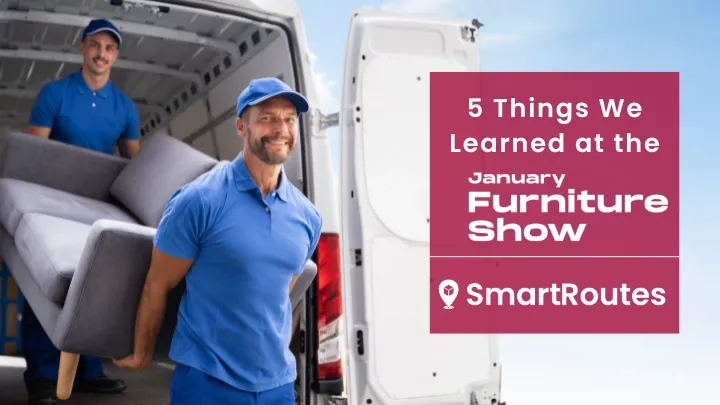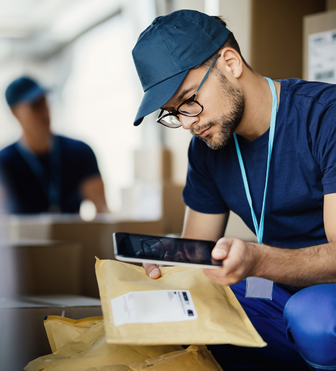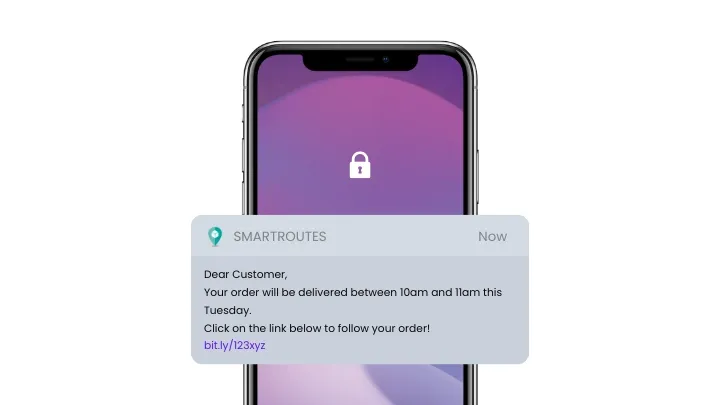5 Things We Learned at the January Furniture Show
Key takeaways from the January Furniture Show, top delivery challenges in 2025 and how smart solutions can improve efficiency and costs.

In January, SmartRoutes exhibited at the January Furniture Show in Birmingham! We attended to connect directly with those in the furniture delivery industry, gain insights into their challenges and see what 2025 has in store for furniture logistics.
Now that the dust has settled, here are the key takeaways from our conversations at the event.
A Look at the January Furniture Show
The January Furniture Show is the UK’s largest furniture trade show, bringing together brands, wholesalers, and service providers for four days of networking and business planning.
For us, it was a great opportunity to hear firsthand about the pain points businesses face and discuss how smart delivery solutions can help streamline operations, improve customer satisfaction and cut costs.
SmartRoutes Route Planning Software
Streamline your entire delivery process, all from one platform

5 Things We Learned at the January Furniture Show
1. The delivery experience matters more than ever
One thing was clear, customer experience is the top priority for furniture retailers and delivery providers.
The focus is on what happens just before, during, and after a delivery. Are customers kept informed? Can they choose a time slot? Was the delivery on time? Was the item in perfect condition? Were they updated once it arrived?
Many businesses not using delivery software found it tough to meet these expectations efficiently.
Without the right tools, tracking deliveries, providing accurate ETAs, and ensuring seamless communication with customers can become a major hurdle.
2. Customer notifications save time and hassle
Many companies still rely on manually calling customers to confirm delivery slots, a time-consuming process, especially when schedules need to be rearranged.
Some drivers do not even have access to full address details, meaning they have to call customers for extra information on the go. This often leads to delays, missed deliveries, and frustrated customers.
Businesses were particularly interested in how automated notifications could simplify this process, ensuring customers receive timely updates via SMS or email without the need for constant phone calls.
3. Paper-based proof of delivery is outdated
Proof of delivery (POD) is essential, especially for high-value items like furniture. But paper records are easy to misplace and difficult to search through when disputes arise.
Some businesses shared that they struggled with lost or incomplete records, making it challenging to resolve customer claims.
Digital POD solutions, like capturing photos, signatures, and timestamps, make it much easier to verify deliveries, store records securely, and quickly retrieve them when needed.
By moving to digital proof of delivery, businesses can protect themselves from disputes and enhance accountability in the delivery process.
4. Maximizing delivery vehicle capacity is a challenge
Furniture deliveries vary in order size and product dimensions, making it tricky to load vehicles fully.
When vans are not at capacity, costs per delivery go up due to extra fuel, additional trips, and wasted driver hours.
Some businesses shared that they often had to send out multiple vehicles when better route planning could have helped consolidate deliveries.
Others weren’t sure if they could scale up operations with their existing fleet. (Improved efficiency in route planning and load management could make that possible!)

5. Cutting costs without compromising quality is tough
Many businesses had tried to reduce costs by outsourcing deliveries or bringing them in-house, each with its own challenges. The consensus? If operations are not highly efficient, costs quickly spiral.
Some businesses that opted for cheaper delivery providers found that inconsistent service led to customer complaints and costly redeliveries.
Others that relied on manual route planning struggled with fuel costs and driver inefficiencies.
Cutting corners, whether by choosing lower-quality providers, using outdated vehicles, or manually planning routes, often leads to more problems and higher long-term expenses. Instead, businesses need to focus on operational efficiency to bring down costs while maintaining a high-quality delivery experience.
How Delivery Software Can Help with Furniture Deliveries
Having gone through the key learnings from the show, now let’s go through each of them and how delivery software can help with furniture deliveries:
1. Improving the delivery experience
Smart delivery software automates furniture route planning to create more precise ETAs, reducing the chances of missed deliveries and the costly need for redeliveries.
Customers can receive live tracking links that update in real time, keeping them informed and improving their overall experience.
A smooth and transparent process results in higher customer satisfaction and repeat business!
2. Automating customer notifications
Automated notifications ensure customers receive timely updates at every stage of the delivery process, from scheduling to completion.
Instead of relying on manual phone calls, businesses can send notifications via SMS or email, reducing administrative work while keeping customers informed.

Delivery time slots can also be confirmed digitally, minimizing rescheduling issues and improving efficiency.
3. Moving to digital proof of delivery
Switching to digital POD eliminates the hassle of paper-based record-keeping.
With electronic proof of delivery, drivers can capture photos, signatures, and geotagged timestamps at the point of delivery.
This provides a clear record of the condition of goods upon arrival, helping to quickly resolve disputes while making data easily searchable and securely stored in the cloud.
4. Optimizing vehicle loads and routes
Proper route planning allows businesses to optimize how delivery vehicles are loaded, reducing wasted space and ensuring items are arranged in the correct delivery sequence.
This approach helps drivers make efficient drop-offs, improves fuel efficiency, and allows companies to balance workloads across their fleet.
By maximizing vehicle capacity, businesses can cut unnecessary trips and keep costs under control.
5. Lowering costs without sacrificing quality
Rather than making cuts that negatively impact service, delivery software helps businesses reduce costs by improving efficiency at every stage.
Optimized routes lower fuel expenses, reduce driver hours, and eliminate time wasted on manual scheduling.
By maintaining a streamlined and automated process, businesses can deliver a high standard of service while keeping operational costs in check.
Smarter Furniture Deliveries for 2025 and Beyond
We had a fantastic time meeting so many industry professionals at the event, including some of our own customers. It was great to catch up!
Are there any upcoming events you are attending? Let us know!
If you would like to see how SmartRoutes can transform your furniture deliveries, why not try it for free and see the difference for yourself?
Frequently asked questions
1. How can delivery software improve the furniture delivery experience?
Delivery software enhances the customer experience by providing accurate ETAs, live tracking, and automated notifications. This ensures customers stay informed about their deliveries, reducing missed appointments and improving satisfaction.
2. What are the benefits of digital proof of delivery for furniture businesses?
Digital proof of delivery allows drivers to capture photos, signatures, and timestamps, which are securely stored in the cloud. This makes it easy to resolve disputes, track deliveries, and maintain a reliable record of all completed orders.
3. How does delivery route optimization help furniture businesses save costs?
Optimized route planning reduces fuel costs, minimizes driver hours, and ensures vehicles are loaded efficiently. By reducing unnecessary mileage and maximizing delivery capacity, businesses can lower their cost per delivery without sacrificing service quality.
4. Can automated notifications reduce delivery delays?
Yes, automated notifications keep customers updated at every stage of the delivery process, reducing the need for manual phone calls and last-minute rescheduling. This improves communication, minimizes delays, and helps ensure on-time deliveries.
If you enjoyed this blog, you might also be interested in:








